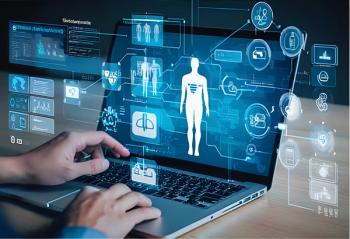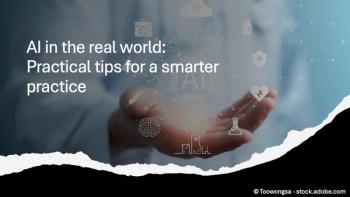
Making the Case for the Narrative Note in a Post-EHR World
Today's EHRs are little more than glorified data collection devices, making meaningful clinical use difficult or impossible without more information.
It is notoriously difficult to convey to others, information that you have about a patient*. It requires that you choose a set of signs (data) that, when assimilated by the recipient, will signify to them what you intended. You might find that your thoughts can be best represented using a combination of numbers, words (character sequences), images, and sounds (each with their own representation: jpeg, wav, etc.) and indication of how your representation is organized. Computer scientists call this set of decisions regarding the signs a data representation.
In medicine, the chart, in addition to documenting care, serves as a channel through which your communiqués (notes) are transmitted. The goal may be to communicate contemporaneously with other locations or it may be to send information into the future; for later use by others, or perhaps you.
To me, the primary purpose of an electronic health record is to accomplish these functions using a computer instead of paper. Many, on hearing the word "computer" forget the primary purpose, which is to inform others and instead, become fixated on "data" collection which, as everyone "knows," is what computers are for.
Designing an EHR rarely begins by considering the need to store and process a practitioner's notes. It typically begins by adopting a data representation scheme that is readily available - one designed for some other purpose – and then doing the best that one can to force it to accommodate medical information, much like Cinderella's sisters trying to squeeze their feet into the glass slipper. Rather than accept such a compromise, one could begin by devising a representation that faithfully reflects medical information, one that is organized in such a way that it is amenable to computer processing. This approach is rarely followed; it takes time, effort, and thought. This article will focus on understanding the primary purpose - conveying information effectively - using a clinical example.
I share clinic space with a geneticist who cares for individuals who exhibit some or all of the features of a syndrome described by John Langdon Down in 1866 which, in 1959 was identified as being associated with a supernumerary 21st chromosome (Trisomy 21), As my colleague emphasizes, Trisomy 21, by itself, is not Down Syndrome, only its cardinal feature. Aside from the extra chromosome, the other features of the syndrome occur in most, some or none of those affected.
My colleague forms a mental representation of each patient, noting the ways in which that individual manifests the various characteristics of the syndrome and how they interact with the patient's growth, development, social situation, and other medical conditions. He records some of his mental representation as handwritten notes, making an effort to be informative but some, he comprehends in ways that are difficult to translate into words or discrete data elements. The narrative form allows him the flexibility to choose which aspects of each patient to emphasize in his note and which words will best communicate his thoughts.
Certain characteristics (properties) of a patient with Down syndrome (or any patient) are easily represented as numbers (height, weight, etc.) or short character strings ("harsh systolic ejection murmur over the pulmonic area and left sternal border," "flattened nose," "single crease in the palm of the hand," etc.) and can be captured in a data collection system but none of these singly, or in combination is Down Syndrome. Neither the name, Down Syndrome, nor the ICD-9 code for Trisomy 21 (758.0) alone, or in combination with a few vital signs and labs, can adequately inform anyone, least of all a non-specialist, about those characteristics of a specific patient that require special attention. If EHR data collection forces you to label rather than describe a patient, the meaning of that label will never be clear in retrospect since it lacks nuance, detail and the necessary context.
Today's computer hardware was designed to manipulate numbers and letter codes **, not complex data structures. As a result, we have EHRs that excel at storing sets of discrete data elements devoid of context. Unfortunately, data sets of this type are poorly suited to capturing a practitioner's mental representation of a patient, which, of necessity, has a complex internal arrangement and depends on preserving the relationships between the components and their contextual descriptors (metadata).
An EHR that costs billions and satisfies the "meaningful use" regulations but is primarily a data collection device may actually detract from a practitioner's ability to maintain a record of any person's care, compared to paper, especially if that person has a complex problem such as the Down syndrome. On the other hand, a system can add value by paying attention to each patient as an individual, offering a reliable method of making the record legible and retrievable throughout the life of the patient and supporting those committed to creating rich, faithful records. To be justifiable, an EHR must provide a mechanism that does not interfere with the practitioner's ability to communicate with others. If this cannot be assured, the EHR is counterproductive and detrimental to the patient.
* Information being a combination of some data plus what it signifies to you.
** More on this next week.
Newsletter
Optimize your practice with the Physicians Practice newsletter, offering management pearls, leadership tips, and business strategies tailored for practice administrators and physicians of any specialty.




